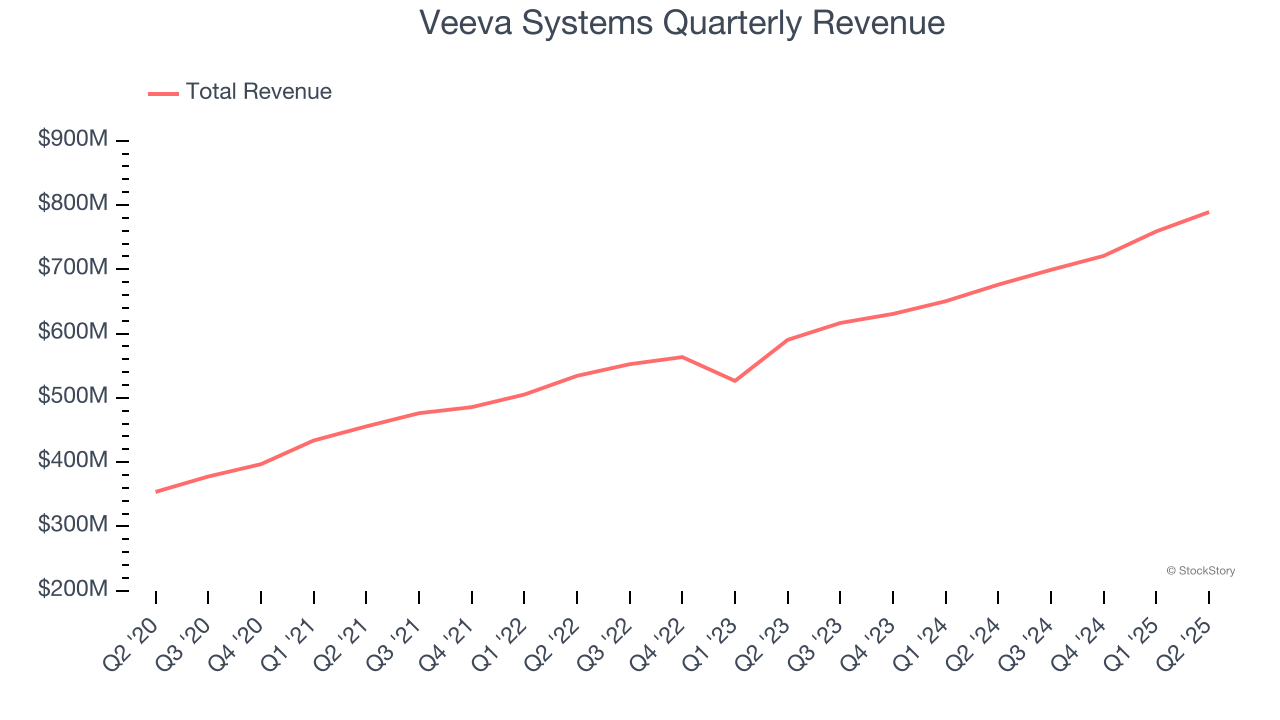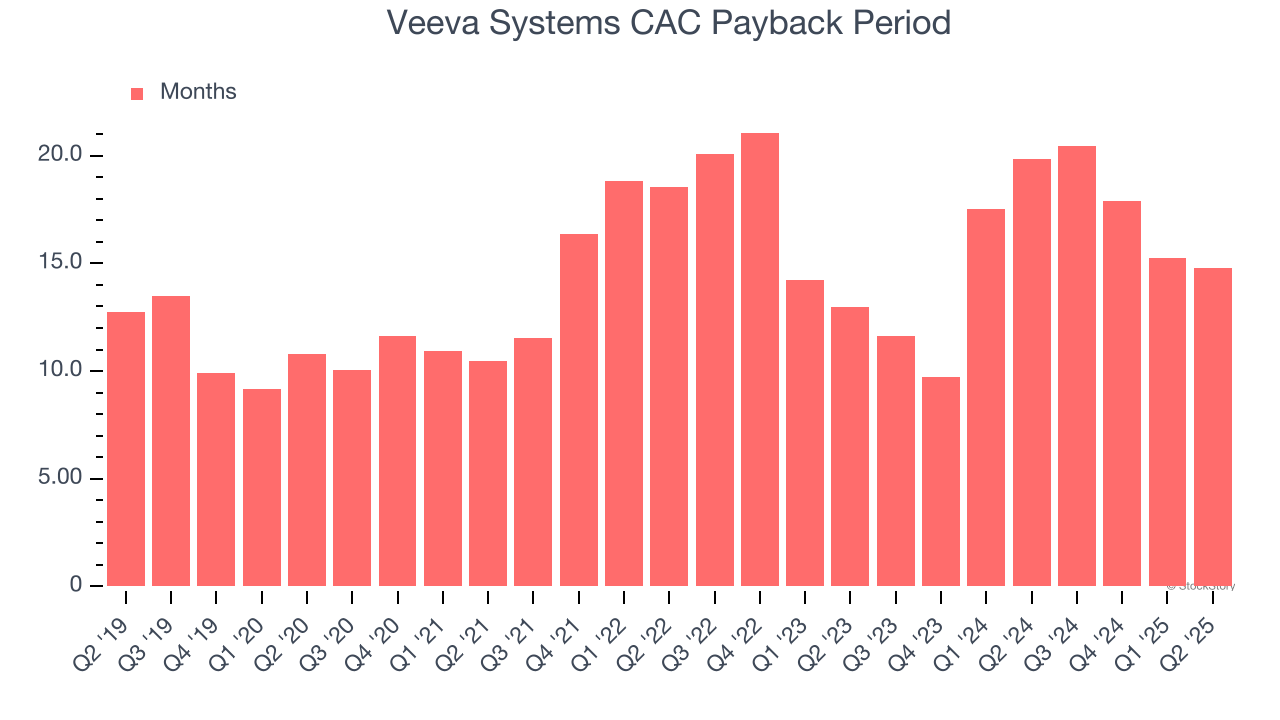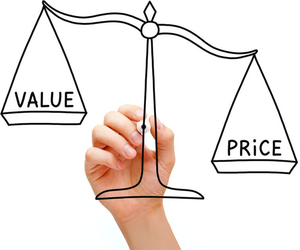
Life sciences cloud software provider Veeva Systems (NYSE: VEEV) beat Wall Street’s revenue expectations in Q2 CY2025, with sales up 16.7% year on year to $789.1 million. Guidance for next quarter’s revenue was better than expected at $791.5 million at the midpoint, 1.7% above analysts’ estimates. Its non-GAAP profit of $1.99 per share was 4.7% above analysts’ consensus estimates.
Is now the time to buy Veeva Systems? Find out by accessing our full research report, it’s free.
Veeva Systems (VEEV) Q2 CY2025 Highlights:
- Revenue: $789.1 million vs analyst estimates of $768.4 million (16.7% year-on-year growth, 2.7% beat)
- Adjusted EPS: $1.99 vs analyst estimates of $1.90 (4.7% beat)
- Adjusted Operating Income: $352.6 million vs analyst estimates of $337 million (44.7% margin, 4.6% beat)
- The company lifted its revenue guidance for the full year to $3.14 billion at the midpoint from $3.10 billion, a 1.4% increase
- Management raised its full-year Adjusted EPS guidance to $7.78 at the midpoint, a 2% increase
- Operating Margin: 24.8%, in line with the same quarter last year
- Free Cash Flow was -$1.21 billion, down from $871.2 million in the previous quarter
- Market Capitalization: $46.82 billion
Company Overview
Originally named "Verticals onDemand" before rebranding in 2009, Veeva Systems (NYSE: VEEV) provides cloud software, data solutions, and consulting services that help life sciences companies develop and bring products to market more efficiently.
Revenue Growth
Examining a company’s long-term performance can provide clues about its quality. Any business can have short-term success, but a top-tier one grows for years. Over the last three years, Veeva Systems grew its sales at a 14% annual rate. Although this growth is acceptable on an absolute basis, it fell short of our standards for the software sector, which enjoys a number of secular tailwinds. Luckily, there are other things to like about Veeva Systems.

This quarter, Veeva Systems reported year-on-year revenue growth of 16.7%, and its $789.1 million of revenue exceeded Wall Street’s estimates by 2.7%. Company management is currently guiding for a 13.2% year-on-year increase in sales next quarter.
Looking further ahead, sell-side analysts expect revenue to grow 10.1% over the next 12 months, a deceleration versus the last three years. Still, this projection is above the sector average and suggests the market sees some success for its newer products and services.
Software is eating the world and there is virtually no industry left that has been untouched by it. That drives increasing demand for tools helping software developers do their jobs, whether it be monitoring critical cloud infrastructure, integrating audio and video functionality, or ensuring smooth content streaming. Click here to access a free report on our 3 favorite stocks to play this generational megatrend.
Customer Acquisition Efficiency
The customer acquisition cost (CAC) payback period measures the months a company needs to recoup the money spent on acquiring a new customer. This metric helps assess how quickly a business can break even on its sales and marketing investments.
Veeva Systems is extremely efficient at acquiring new customers, and its CAC payback period checked in at 14.8 months this quarter. The company’s rapid recovery of its customer acquisition costs means it can attempt to spur growth by increasing its sales and marketing investments. 
Key Takeaways from Veeva Systems’s Q2 Results
It was great to see Veeva Systems raise its full-year revenue and EPS guidance. We were also glad this quarter's numbers beat across the board. Overall, we think this was a solid quarter with some key metrics above expectations. Investors were likely hoping for more, and shares traded down 2.4% to $287 immediately after reporting.
Is Veeva Systems an attractive investment opportunity right now? What happened in the latest quarter matters, but not as much as longer-term business quality and valuation, when deciding whether to invest in this stock. We cover that in our actionable full research report which you can read here, it’s free.






